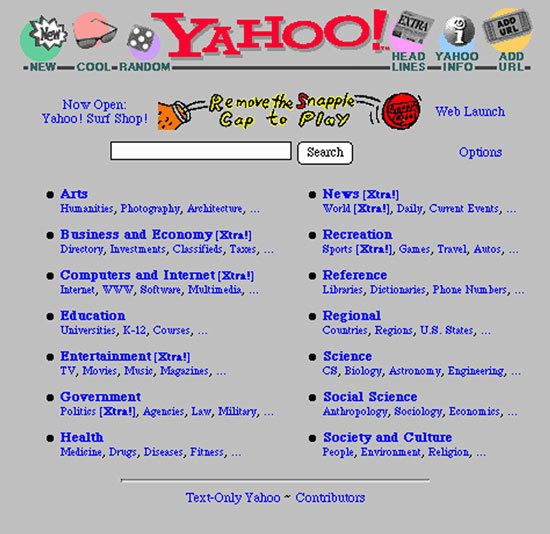Introduction to
Linked HTML library

Dominik Lubański
Senior Frontend Developer at

research


Let's go back to the 90s for a moment
1995 ········
First official HTML specification

- Web sites were based on complete HTML pages
- Each user action required loading a complete page from the server
- Inefficient process: all page content disappeared, then reappeared
········ 2005 ········
The term "Ajax" is publicly stated on 18 February 2005 by Jesse James Garrett
- Websites began to have a dynamic parts without full page refresh
- Client side JS frameworks are created
- Single Page Application architecture
········ 2015
Usage of JavaScript libraries for websites
Market share stats from w3techs.com



0.1%
0.3%
67.4%
The top 10 million websites from rankings provided by Alexa
Conclusions from research
- Most of the websites still use backend frameworks to render data
- Web development has not changed much since 1995...
- Javascript frameworks are not used as much as we would like
problems

Javascript frameworks are
too complicated for simple tasks

GIF from www.webcodeexpert.com
They need initial data model to render view
<input type="text" ng-model="name" value="Dominik" />
<span ng-bind="count">120</span><input ... value="Dominik" ng-init="name = 'Dominik'" />
<span ng-bind="count" ng-init="count = 120">120</span>Angular will not use value from server and render
empty input and span.
You have to use ng-init:
No server side rendering without Javascript (node.js)
var React = require('react');
var AppComponent = require('./app');
server.get('*', function(req, res) {
var component = AppComponent();
var html = React.renderToString(component);
res.send(html);
});
Template syntax conflicts with backend template engines
<h1>{{ Title }}</h1>
<p>{{ description }}</p>Angular:
Twig (php):
<h1>{{ Title }}</h1>
<p>{{ description }}</p>idea

-
Simple and easy to learn API
- Data model extracted from html generated by any server-side language or template engine
- Safe markup syntax
- Dynamic data binding for boosting development
- Superfast DOM rendering
Linked HTML
A multi-purpose HTML & data linking library
architecture

easy to learn API

Linked HTML architecture covers three concepts
-
Engine - It connects all the parts together, library starts with this module
-
Markers - Micro modules for linking data model with DOM
- Expression - It evaluates values passed to markers
engine / markers / expression
Library starts with Engine module:
import { Engine } from 'linked-html';// Set root node
const el = document.getElementById('example');// Initialize live view
const myView1 = new Engine(el);
// or with options
const myView2 = new Engine(el, {
state: { title: 'super' } // Initial state
prefix: 'data', // for <div data-marker="...">..
markers: { myMarker },
filters: { time, something }
});// with options
const myView2 = new Engine(el, {
state: { title: 'super' } // Initial state
prefix: 'data', // for <div data-marker="...">..
markers: { myMarker },
filters: { time, something }
});Engine state property is used as data model container.
engine / markers / expression
safe markup syntax

Preprocessed syntax like Mustache / Handlebars
<div data-marker="...">Part of HTML specification - custom attributes
NO: Javascript on server-side, possible conflict with template engines.
YES:
<div --marker="...">Shorter syntax with custom prefix (— instead of data):
extracting data model

<h1 class="new" --class="new: isNew" --text="name">
Mug white with black roses
</h1>In example above are used --class, --text, --prop markers.
<img src="/path/to/product/thumb.png" --prop="src: thumbUrl" /><p class="desc" --text="description">
Mug white with floral motifs and Golden liseret,
black flowers. Fast shipping upon receipt of payment,
anywhere in the world.
</p>Consider example structure of e-commerce product:
Marker implementation
- Markers are nothing more then ordinary functions called in compilation process
// For html above Engine will call:
TextMarker(engine, h1, "name")- Engine has a map that points --text to TextMarker function:
<h1 --text="name">Title</h1>-
Markers are especially created for linking data with html nodes
- They are something like JSON Schema for JSON objects, but built-in html nodes
- Library provides few more of them with other functionality - for linking arrays, working with forms, listen for events etc..
engine / markers / expression
Expression represents destination property path
<div --marker="expression"></div>
<div --marker="key: expression; key: expression;..."></div>import { Expression } from 'linked-html';
function Marker(engine, node, evaluate) {
...
const expr = new Expression(engine, evaluate);
...
}Markers use attribute value as an expression:
Expression has to be initialized:
Expression uses engine state property as destination root.
// myView.state after compilation
{
"isNew": true,
"name": "Mug white with black roses",
"thumbUrl": "/path/to/product/thumb.png",
"description": "Mug white with floral motifs..."
}Markers initially push state from DOM to data model. It is done only once during compilation process:
Library can take state from constructor and merge it with state from HTML.
Only expressions with undefined value are set from DOM:
const myView = new Engine(el, {
state: { "isNew": false }
});// myView.state after compilation
{
"isNew": false, // not set from DOM,
"name": "Mug white with black roses",
"thumbUrl": "/path/to/product/thumb.png",
"description": "Mug white with floral motifs..."
}something.onepath
something.one[0].pathcount + other || 1YES
NO
Path works with nested properties
(but It is not interpolated JavaScript):
Expression path has to be a settable end-point because of two-way nature of initializing data model.
something.one! @ & *flags
path
Flags are one character prefixes which change expression behavior
@ set engine instance as destination root:
<button --on="click: @doSomething"></button>
<span --text="@count"></span>class MyEngine extends Engine {
// event callback
doSomething() {
this.state.count++;
}
// computed property
get count() {
return this.state.count * 5;
}
}& makes expression settable only one way (no push from DOM
to data model):
<div class="with-title" --class="with-title: &title">
<h1 --text="title">My title</h1>
</div>// Without &
engine.state === { "title": true }
// With &
engine.state === { "title": "My title" }! inverts expression value:
<div class="box" --prop="hidden: &!desc">
<p --text="desc">
Mug white with floral motifs and Golden liseret,
black flowers. Fast shipping upon receipt of payment,
anywhere in the world.
</p>
</div>engine.state === {
"desc": "Mug white with floral motifs and Golden liseret..."
}something.one|filterpath
filter
Filter modifies setting/getting value of expression:
<div --text="updatedAt|date">10-12-2015</div>import moment from 'momentjs';
const date = {
// Data model --> DOM
get: (d)=> d.format('DD-MM-YYYY'),
// DOM --> data model
set: (d)=> moment(d, 'DD-MM-YYYY')
};
const engine = new Engine(el, { filters: { date } });dynamic data binding

Expressions can be observed for detecting changes:
const expr = new Expression(engine, 'someProperty');
// Equality check: a === b
expr.observe((value) => {
console.log('New value of someProperty:', value);
});Markers uses that feature to reflect state changes in DOM.
// Deep properties watching with 'papillon' library
expr.observe((value, changelog) => {
console.log('Deep property changed:', changelog.propertyA);
}, false, true);Getting or setting `state` property of Engine instance queues change detection:
myView.state.isNew = false;
myView.state.name = 'Super Mug ...';<!-- After next repaint -->
...
<div class --class="new: new">
<h1 --text="name">Super Mug...</h1>
...We have dynamic and responsive UI!
limitations

Content has to be rendered by the server:
{% if ... %}
<div class="info" --text="imporantThing">
Aspernatur blanditiis aut delectus quo aliquam eaque
asperiores ad. Ullam animi consequatur sunt.
</div>
{% endif %}<div --text="imporantThing" {% if ... %}hidden{% endif %}>
Aspernatur blanditiis aut delectus quo aliquam eaque
asperiores ad. Ullam animi consequatur sunt.
</div>No:
Yes:
Complex server side logic has to copied:
<div class="{% if logic() %}superClass{% endif %}" ...<div
... --class="superClass: @logic">class MyEngine extends Engine {
get logic() {
// code here
}
}Other things in short
- State property is never prototypical chained (Angular nested and isolated scope problem).
- Object and array markers uses spawned Engine instance.
- Markers are designed to produce possibly minimal DOM changes.
- Architecture is ready for using as a client side rendering engine.

use cases

-
Extract data model for SEO events and other general uses
-
Dynamic user interface from backend rendered view
-
Rendering engine for web components
-
DOM equality testing tool
live example

roadmap

-
End of this year:
-
Finished API documentation
-
Helpful guides and tutorials
-
-
Q1 2016:
-
Missing markers and core functionality
-
Web components wrapper module
-
-
Q2+ 2016:
-
Everything you propose!
-
help

If you want to be part of
something big:
-
Give Linked HTML repository a star!
-
Try it yourself, use it with your projects and give a feedback
-
Be a contributor and make it even better -
any idea is welcome!
thank you

Icons from Icons8